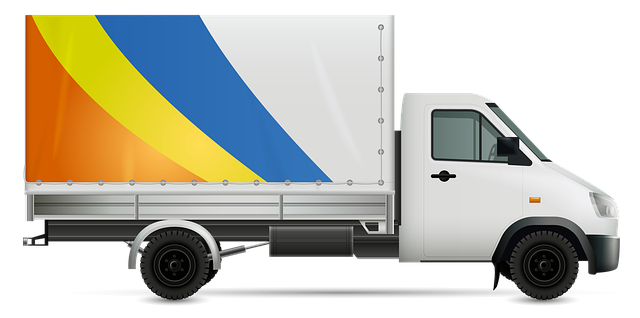Looking to register your car in California? This comprehensive guide will walk you through the process, from understanding key requirements to submitting applications. First, familiarize yourself with California’s car registration mandates, focusing on vehicle eligibility and necessary documents. Next, gather essential paperwork for a crucial VIN (Vehicle Identification Number) verification. After passing this step, head to the DMV to finalize your application and fees. Lastly, receive your California Registration Certificate, marking your successful vin verification and completion of the registration process.
- Understand California Car Registration Requirements
- Gather Necessary Documents for VIN Verification
- Perform Vehicle Identification Number (VIN) Check
- Submit Applications and Fees to the DMV
- Receive Your California Registration Certificate
Understand California Car Registration Requirements

Before registering your car in California, it’s crucial to understand the state’s specific requirements for vehicle registration. One key aspect is ensuring that your car passes a comprehensive vin verification process. This involves checking the Vehicle Identification Number (VIN) to confirm the vehicle’s authenticity and history, which includes verifying the odometer reading and assessing any previous damage or accidents reported on the vehicle.
California also mandates that vehicles undergo a safety inspection to ensure they meet state-set standards for emission control and safety equipment. Additionally, you’ll need to provide proof of insurance and pay the associated registration fees. For added convenience, many residents opt for mobile vin verification services or mobile vin inspections, which allow for quicker processing by having an inspector come to your location to perform the necessary checks on your vehicle’s VIN and overall condition.
Gather Necessary Documents for VIN Verification

Before you start the registration process in California, it’s crucial to gather all the necessary documents for VIN (Vehicle Identification Number) verification. This step is a critical part of ensuring your vehicle’s authenticity and compliance with state regulations. You’ll need key paperwork such as the title or bill of sale from the seller, which shows the current owner and transfer information. Additionally, a valid registration certificate from the previous state of residency and a current insurance card are essential for a seamless vin inspection process.
For convenience, many California residents opt for mobile vin verification services, allowing them to complete this step efficiently. A mobile vin verifier can inspect your vehicle’s VIN by using advanced scanning technology, ensuring accurate data capture. This method streamlines the registration process, saving time and effort compared to traditional vin inspections at a designated location.
Perform Vehicle Identification Number (VIN) Check

Before you begin the registration process, it’s crucial to perform a Vehicle Identification Number (VIN) check. This step is essential for ensuring that the vehicle you’re planning to register is legitimate and has not been reported as stolen or had its identity tampered with. A mobile VIN verifier can be a convenient tool for this purpose, allowing you to conduct a vin inspection right from your location.
By inputting the unique VIN number of your car into a reliable mobile vin verification service, you gain access to a wealth of information about the vehicle’s history, including its previous owners, maintenance records, and any reported accidents or damages. This knowledge is invaluable for making an informed decision about registering your car in California. A simple vin inspection can save you from potential legal issues and financial headaches down the line.
Submit Applications and Fees to the DMV

To begin the car registration process in California, you’ll need to submit several applications and fees to the Department of Motor Vehicles (DMV). The first step involves ensuring your vehicle is eligible for registration by confirming its title and completing a VIN verification. This crucial process, often facilitated through a mobile VIN verifier or vin inspection, checks the vehicle’s history to ensure it meets all legal standards.
After passing the VIN verification, you’ll need to fill out forms like the Application for Title and Registration (Form DVF 140), available on the DMV website. Alongside these documents, you’ll pay the required fees, which vary based on your vehicle’s type and age. This step culminates in the DMV issuing a registration certificate, allowing you to legally operate your vehicle within California’s boundaries.
Receive Your California Registration Certificate

After completing your car’s purchase, it’s time to receive your California Registration Certificate. This crucial document verifies that your vehicle meets all state requirements and is legally operable on California roads. To ensure a smooth process, consider utilizing a mobile vin verification or vin inspection service. These services send a professional to your location to conduct a thorough inspection of your car’s VIN (Vehicle Identification Number), confirming its authenticity and compliance with California regulations.
By opting for a mobile vin inspection, you eliminate the need to visit a DMV office, saving time and effort. This convenient approach ensures that your vehicle is registered accurately and promptly, allowing you to hit the road with confidence.
Registering a car in California involves understanding specific requirements, gathering essential documents for VIN verification, completing a vehicle identification number (VIN) check, submitting applications and fees to the DMV, and ultimately receiving your California registration certificate. By following these steps and ensuring proper vin verification, you’ll be well on your way to legally registering your vehicle in this state.



